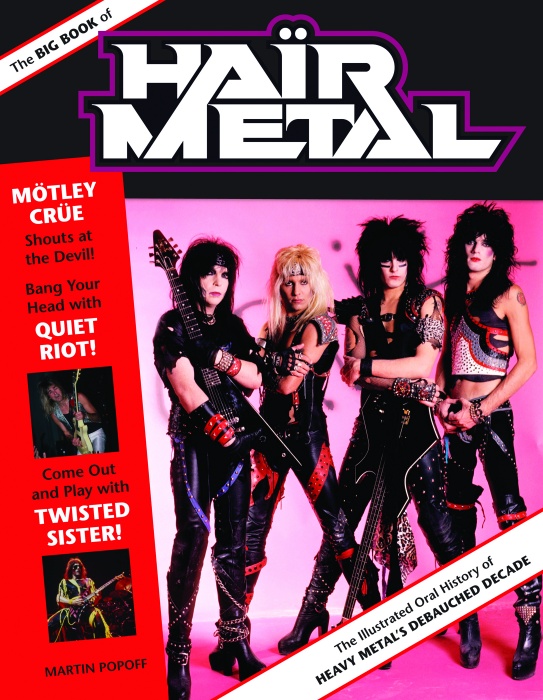Even though the hair metal scene of yesterday is alive and well, it’s not quite the same: you don’t see Poison videos going viral or tweets from members of Cinderella all over the place. But, once upon a time, they were on every television and radio station across North America. It was the ’80s, and The Big Book of Hair Metal by Toronto-based music critic Martin Popoff documents the hair metal scene.
Popoff is one of the world’s foremost authorities on this kind of music, and it shows with this book: he’s crafted a oral history as told by the people who were there, as well as creating a day-by-day breakdown of important events in hair metal’s history.
The oral history is the only stumbling point, as Popoff’s style here is to give the reader a verbatim transcription of the interviews (most of which he conducted himself). While it paints a fun, conversational picture, it also means there are moments of contextless confusion. It can be frustrating, but it’s worth it.
So, wondering when Poison moved to California to break big (or where they moved from, for that matter)? When did David Lee Roth leave Van Halen? What exactly can you tell me about Hanoi Rocks? Probably not much now, but a lot more after you read this book.
And read it you should, if you have any interest in rock music. It was a fascinating time, filled with more ups and downs than people realized, and the story is told here. Plus, the visuals are stunning, every page full colour and jam-packed with artwork from rare singles, magazine ads, shirts, and more.
The book ends with the release of Nirvana’s Nevermind, which hair-metal proponents have long argued killed the genre, or at least killed its mainstream momentum. (I’d argue that hair metal was wearing itself out anyway.) And it’s not without a fun jab by the rocker author: “At this writing, Nevermind is 10x platinum. Big, but not as big as Pyromania or Appetite for Destruction,” writes Popoff in the book.
It’s important that scenes like this are documented, because I, for one, never want bands like Frehley’s Comet or Salty Dog to be forgotten. Even if they were fluffy, disposable ’80s hair metal bands, they were important. This book helps to ensure that their brief moment in time is remembered.

